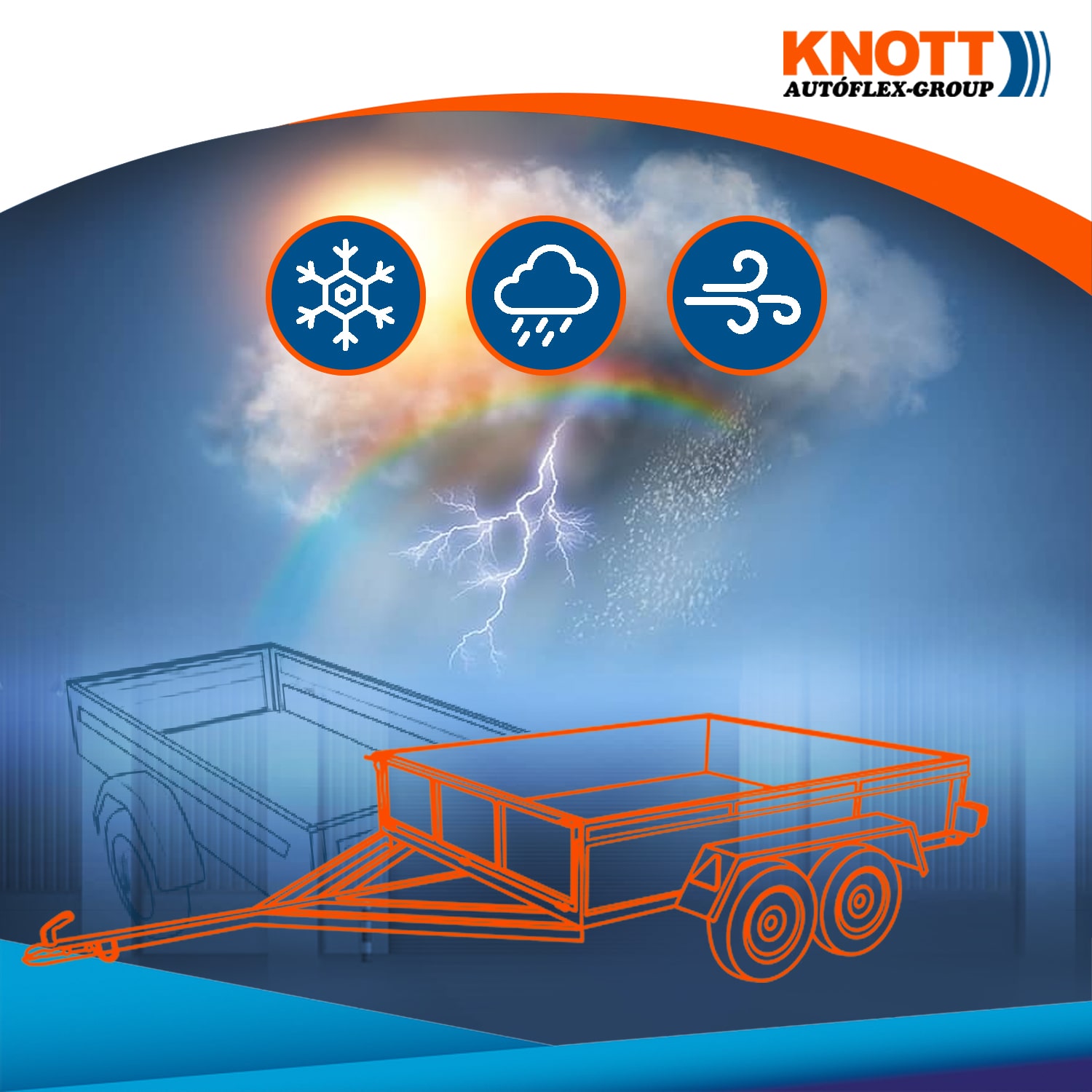We try to provide useful knowledge and information on the website of AUTOFLEX-Knott Ltd. from article to article about the continuous maintenance, perfect operation and excellent equipment of your prized possession, the trailer. Perhaps a less commonly discussed, but also important topic is the storage of trailers and semi-trailers, as this can also help a lot to preserve and protect your towed vehicle. Here are some tips on how to store your trailer in the most professional way.

Extreme environmental conditions – in this case winter – are more challenging for all vehicles, trailers and semi-trailers are no exception. Even the most thoroughly prepared, inspected, repaired vehicles and and those equipped with the best parts need to be protected from external (mainly weather) conditions (strong sunlight, heat, frost, ice, snow, sleet, windstorms, etc…). When the trailer is not in use, the best way to protect it is to store it properly.
Stopping, parking and storage of trailers
Before deciding whether to store a vehicle outside or inside, it is important to know that the Highway Code makes a strict distinction between what counts as a stop, what counts as parking and when a vehicle is in storage. According to the definition in the Highway Code, a stop is “when the vehicle is stationary for the time necessary to get in and out of the vehicle or for continuous loading and unloading, or for a maximum of 5 minutes for other reasons if the driver remains in the vehicle.” It therefore means that a “stop” (staying in one place) of more than 5 minutes is considered as waiting (parking). It is advisable to follow the guidelines of the local council on how to store trailers in public areas, but for safety reasons alone, trailer owners are better off storing their trailers in a garage or indoors.
How to “give the trailers a rest”?
Make enough space for it:
It’s certain that your trailer will have a long life if you store it indoors, but storing trailers and semi-trailers safely is a space-consuming operation, sometimes difficult to do in smaller garages. Detached houses with larger carports or garages are convenient storage options. If there is no garage, is it enough to cover it? It’s safest to store your trailer in your own or a rented garage, but if you don’t have the option, you can also cover it. In this case, leave a small opening under the cover sheet where the trailer can ventilate, as mould can easily appear in cold weather.
Secure the trailer properly:
Make sure that the trailer or semi-trailer cannot move from its designated storage area. The most practical tool for this is a wheel chock which you can use to secure your trailer. The chock can also be supplied with a specially designed chock holder that mounts on the side of the trailer, so when in use, you just put the chock in the chock holder and you’re ready to go.
Empty the entire towed vehicle:
First, unload everything from the trailer before storing it for a long period. Remove sensitive, protruding parts that can be easily removed and store them in a separate, frost-free and moisture-free place.
Clean the trailer thoroughly.
Remove any rubbish, plant or animal remains, anything left over from previous transports. Clean the towing vehicle with a cleaning agent suitable for vehicles.
Prepare your trailer or semi-trailer for proper storage with AUTOFLEX-Knott parts and accessories among which you will find everything you need. Visit our website and browse through our wide range of products.



